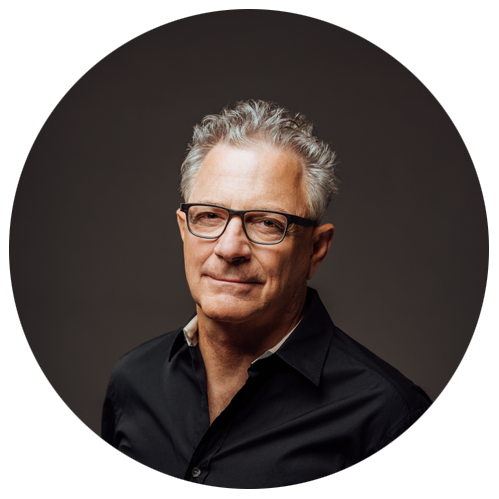Dreams hold the keys to unlock your creativity when you understand how to find and use them. When you’re awake, your conscious mind—complete with all the “practical” knowledge you’ve acquired throughout your life—actively filters what you perceive. This can be useful to get you through the day, but those filters can also block you from accessing the full breadth of knowledge that’s available to you. In his book Dream Tending: Awakening to the Healing Power of Dreams, Dr. Stephen Aizenstat talks about how to tap into not only your own experiences but also the infinite locker of universal knowledge. If you’ve ever wondered how to be more creative, the practice of dream tending offers valuable tools to help mine the landscape of your dreams for keys to unlock creative solutions.
The Dream World as a Living Landscape
One of the primary tenets of dream tending is that your dreams are not static puzzles to be solved and interpreted. Rather, dream images exist in a living landscape that is happening in the now. Rather than picking out pieces of your dreams and attempting to interpret them as symbols, Aizenstat suggests that you regard them as living, conscious entities that you can meet, get to know, question and examine. You should “meet the dream in the way of the dream,” he writes (Aizenstat 29). This simply means that when you’re asleep, your dreams are real. You live them. Likewise, when you’re trying to understand your dreams, the key is to turn off your conscious, analytical mind and approach your dreams as if you are in the dream. Instead of trying to assign symbolism and interpret your dreams as if they’re a foreign language, immerse yourself in them so that you can study and interact with the images in real time.
Mining the Landscape of Your Dreams
A second important aspect of dream tending for creativity is the to be aware of the concept of universal consciousness. If you’re familiar at all with the work of Carl Jung, you’ve heard of archetypes, universal symbols that spring from the collective unconscious. When you dream, you are accessing not only all of your own experiences and knowledge, but also the inherited knowledge and experiences of the entire universe—and you are doing it without the critical filter of your conscious, analytical mind.
Consider how things happen in dreams. You are in a house that you recognize as your house, though it doesn’t actually resemble any house in which you’ve ever lived. You step through a door and find yourself in a jungle populated with odd creatures and suddenly you are 10 years old. In your dream, you don’t question any of these things—they simply are. Using Aizenstat’s method, you don’t attempt to figure out why you are 10 years old wandering through a jungle in your childhood home. Instead, you enter the dream and observe your 10-year-old self, engage her in conversation and pay attention to the feelings you are experiencing.
Animating Dream Images
Before you can engage your dreams, you have to give them life—or more precisely, recognize that your dream images have a life. If you’re going to learn from them, you must first accept them and honor them as separate from yourself. “To explain away an image,” Aizenstat writes, “is to lose contact with an important visitor” (Aizenstat 25). Instead of assuming that you know who or what an image represents, approach the dream image with an attitude of wonder and unknowing, and allow the image to explain itself in its own time and its own way. In the example above, walk with your 10-year-old self. Ask him who he is and listen to the answer. Pay attention to what your body feels as you follow along in your dream. In short, rather than trying to analyze the dream from the outside, step inside it and simply be in the dream, be totally present in the here and now of the dream world.
Tips to Explore the Creative Potential of Your Dreams
Working with dreams in this way requires a complete reframing of the way most people view their dreams. Aizenstat offers some tips to help you engage with dreams and dream images in a way that allows them to reveal themselves to you.
- Speak in the present tense when describing your dreams. Dreams happen in the now, but when we describe them, we often resort to the past tense,i.e., “a bear was chasing me through the forest” is the example he used. Instead, say “a bear chases me.”
- Open body awareness. Immerse yourself in the moment. Feel the world around you. Engage your senses. What do you smell? What do you feel? What is your body doing? Being present in the dream allows you to engage with it more completely.
- Ask the core questions. Rather than asking “what does this mean?” and “why is this happening?” ask “who is visiting now?” and “what is happening here?” By reframing the question, you change the focus of the answers and learn what the dream is trying to tell you rather than what you think you want to know.
- Be patient. Often, the first answer you get is only the surface answer. Ask again and you may receive a different, deeper answer.
Do It Again and Again
One of the most important aspects of dream tending is that it is not an isolated, one-time exercise. In order to fully realize your dreams and understand how to be more creative, you have to build a relationship with your dreaming self and the animated dream images. Just like in real life, relationships are built on repeated interactions, with each interaction building on what has already been learned. This is even more important when you start seeing dreams as a fount of creativity than when trying to understand what a specific dream “means.” Make room in your life for creative dreaming as part of your personal growth, and it will pay off in expanded understanding and creativity in every aspect of your life.
by Deb Powers
Deb Powers is a freelance writer who has studied and written extensively about archetypal images, dreams and metaphysical subjects. Her self-published tarot deck focuses on using tarot images and concepts for self-empowerment and creativity.
References:
- Dream Tending: Awakening to the Healing Power of Dreams by Dr. Stephen Aizenstat, Ph.D.

Stephen Aizenstat
Stephen Aizenstat, Ph.D., is the founder of Dream Tending, Pacifica Graduate Institute, and the Academy of Imaginal Arts and Sciences. He is a world-renowned professor of depth psychology, an imagination specialist, and an innovator. He has served as an organizational consultant to major companies and institutions, and as a depth psychological content advisor to Hollywood film makers. He has lectured extensively in the U.S., Asia, and Europe. He is affiliated with the Earth Charter International project through the United Nations, where he has spoken. Professor Aizenstat is the Chancellor Emeritus and Founding President of Pacifica Graduate Institute. He has collaborated with many notable masters in the field including Joseph Campbell, James Hillman, Marion Woodman, and Robert Johnson.
Unleash your creativity and innate genius
Learn the Power, Purpose and Intelligence of Dreams
Improve the quality of your relationships, discover your authentic life purpose and improve your emotional and physical health with the Dream Tending Academy.
Free e-book download
For over 40 years, I have devoted my life to understanding the profound wisdom and healing power that exists within each of us. I am excited to share my latest e-book that showcases how to tap into your dream state through the powerful applications of creativity and innovation. By following my groundbreaking methods and techniques, you will discover how to unlock your creative potential, increase your emotional and intellectual bandwidth, and realize your personal and professional goals. Download my e-book and unlock the secrets of your dreams and deep imagination!








